Braunston Pickle
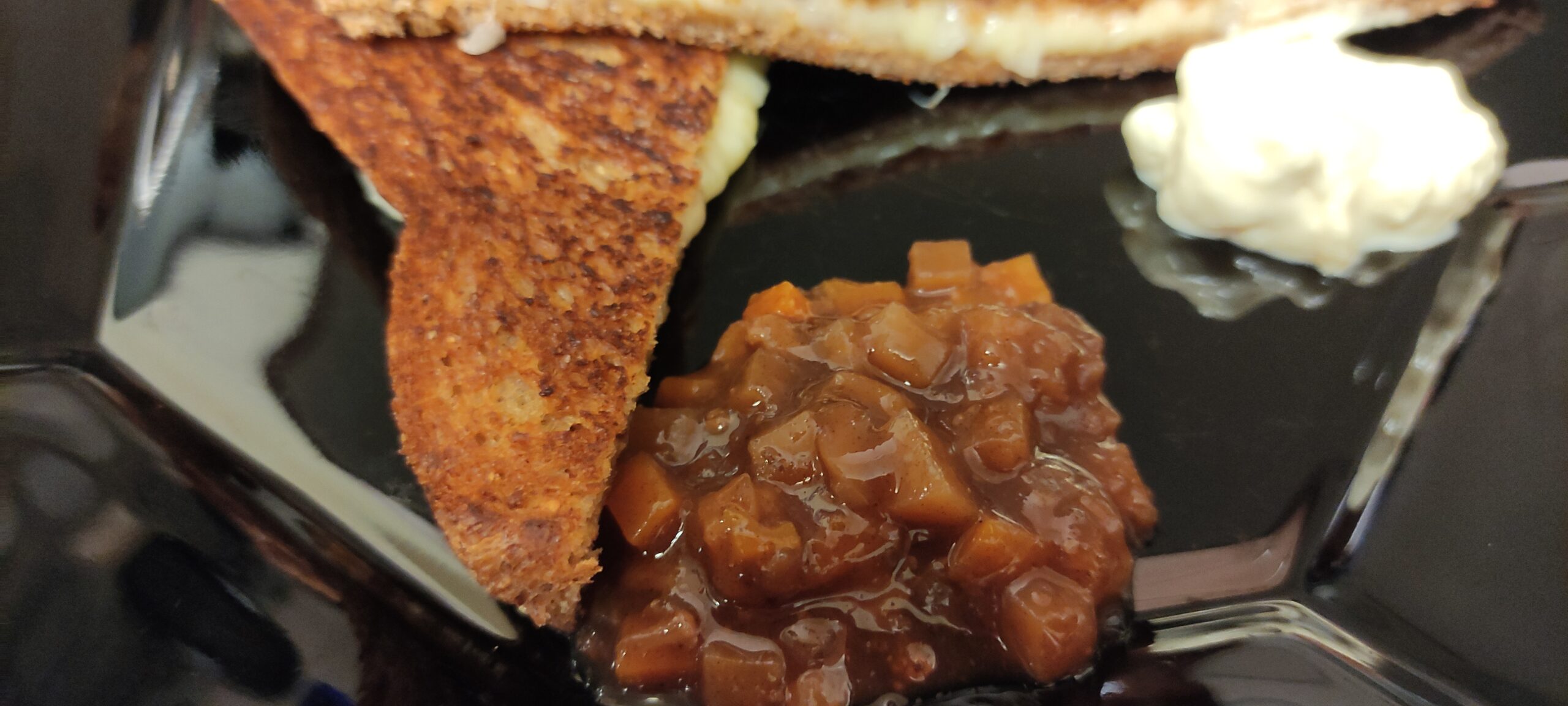
When I first came to the UK, a Ploughman's lunch with a pint at the local pub was still a "thing". Though it sounds incredibly authentic, in reality it was a '70s invention by a pub chain, designed to provide a cheap, easily prepared lunch for its customers. A chunk of crusty bread, some butter, some cheddar, an apple or some salad, and of course the mandatory dollop of Branston pickle. What joy when I learned you could by Branston by the jar!
Times and tastes change. The last time I bought it (the '90s perhaps), it was almost all lumps of swede drowning in a sauce that tasted of nothing but spirit vinegar. From then on I relied on the tomato & date chutney that I made each year, which is an altogether more delicate beast. It never quite lived up to the memory of my first taste of Branston however.

Chumley keeping watch on one group of students from a bridge on the Grand Union Canal
For ages now I've been wanting to make my own version, which I've named Braunston pickle after a tiny place called Little Braunston on the Grand Union Canal.
It's where the narrowboat residentials I used to organize for my students would set out from and return to each year. I would take my dogs along. Chumley was in his element. He'd spend the whole day long racing around, keeping his eye on the students and staff to make sure all were accounted for.
But how do you go about reverse engineering a recipe? In this case, a peek at the list of ingredients is a start.
You will notice that the chemically made caramel listed as "Colour" hasn't made it to my version, nor was I brave enough to burn sugar, hence the discrepancy in colour between Branston and Braunston.
Nor do I keep concentrated lemon juice in my cupboard...but I do have tamarind paste, which will do a similar job.
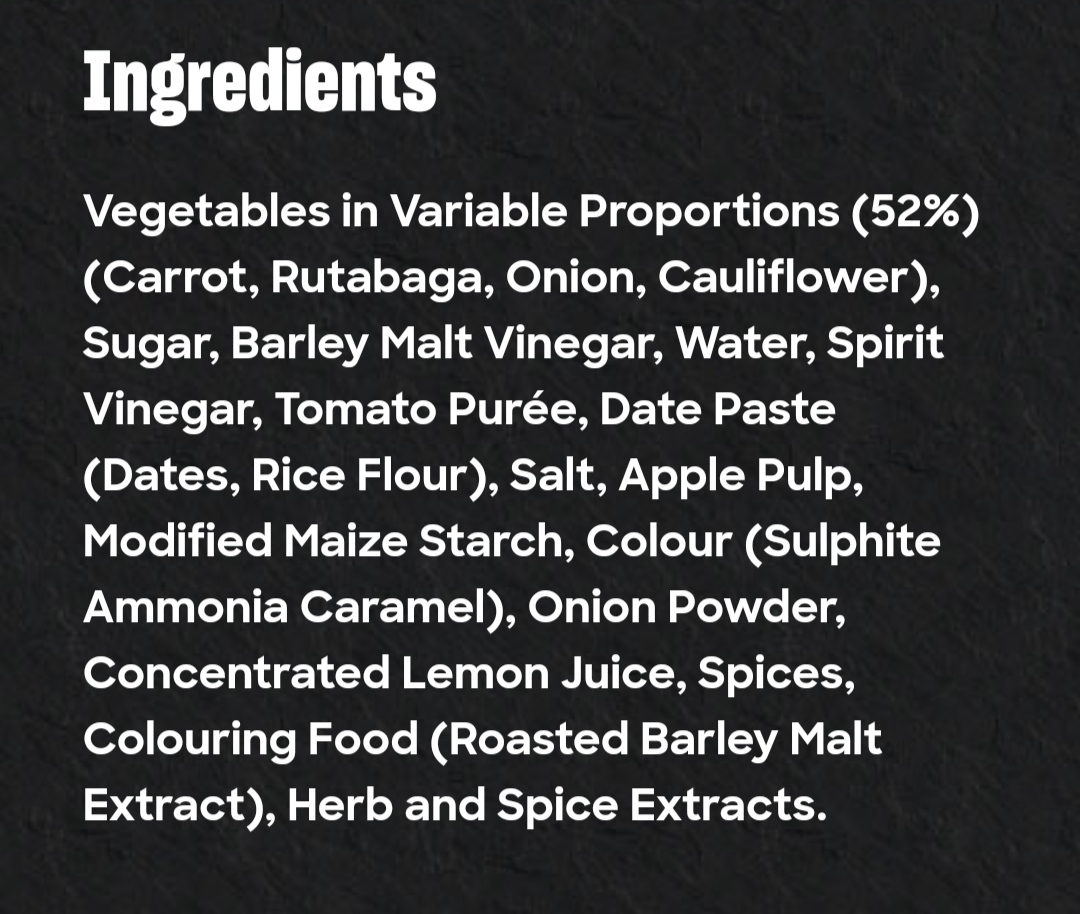
You'll see that the vegetables form 52% of the total ingredients by weight. Nearly all chutneys work to a ratio of 1.5kg - 2kg of fruit to 250g - 300g of sugar and 1 pint of vinegar. So just over 1kg of vegetables plus apples and dates to bring it up to the 1.5kg mark, plus 250g of brown sugar and 1 pint of malt vinegar should do the trick.
But what about the all-important spicing? For inspiration I turned to a recipe from my childhood for plum sauce. Scaled down, and based on the amount of vinegar used, it indicated 2/3rds of a teaspoon of ground cloves, allspice, and ginger. I erred on the side of caution and used 1/2 a teaspoon of each.
Yet the important question you'll be asking is, "What does it taste like? Is it anything like Branston?"
Well, yes and no. There seems to be a lot more vegetables compared to amount of sauce, and they seem to be much softer in texture, probably because of the cooking time I chose to employ. It's a little sweeter than I recall, and though the spicing's incredibly good, you'll see I've cut the amount of ginger I'll use the next time I make it to achieve a more balanced, Branston-like flavour.
Branston always had a slight edginess to it due to the inclusion of spirit vinegar, and my version hints at this but without causing me to gasp when it goes in my mouth. The consistency of the sauce is good: it's neither too thick nor too runny. I'm a little worried about the addition of water - I've never added water to chutneys before (or used cornflour to thicken them!) - so only time will tell if the pickle keeps well. Watch this space for updates!
All in all, though, it's utterly delicious and it fills the taste gap in the range of chutneys I make regularly.
Makes about 6 standard jam jars.
Ingredients
The vegetables and fruit:
500g (1 small-medium) swede [neeps]
300g (2 medium-large) carrots
150g (1 medium-large) onion
125g (the core and 1 good-sized floret) cauliflower
300g (3 small/2 medium) Granny Smith apples, peeled & cored
120g dates, stoned
For the spicing:
1 pint malt vinegar
2 teaspoons tamarind paste
1 1/2 teaspoons salt
1/2 teaspoon ground cloves
1/2 teaspoon allspice
1/3 teaspoon ground ginger
1/4 teaspoon ground black pepper
To finish:
1 tablespoon tomato puree (paste)
200mls distilled white malt vinegar
200mls water
250g dark brown sugar
8 teaspoons cornflour, slaked to a thin cream with water
Learn how to sterilize glass jars here:
Method
1.
Chop the vegetables and dates quite small and roughly all the same size. I'm doing this by cutting long, thin slices of the carrot and the swede into manageable 6-inch batons, then gathering them into small bunches, which get cut across into cubes.

2.
Their size is larger than the Sandwich pickle and smaller than the original.
This is a lot of work to do by hand, so either pace yourself and do a bit at a time, or co-opt people in to help you.
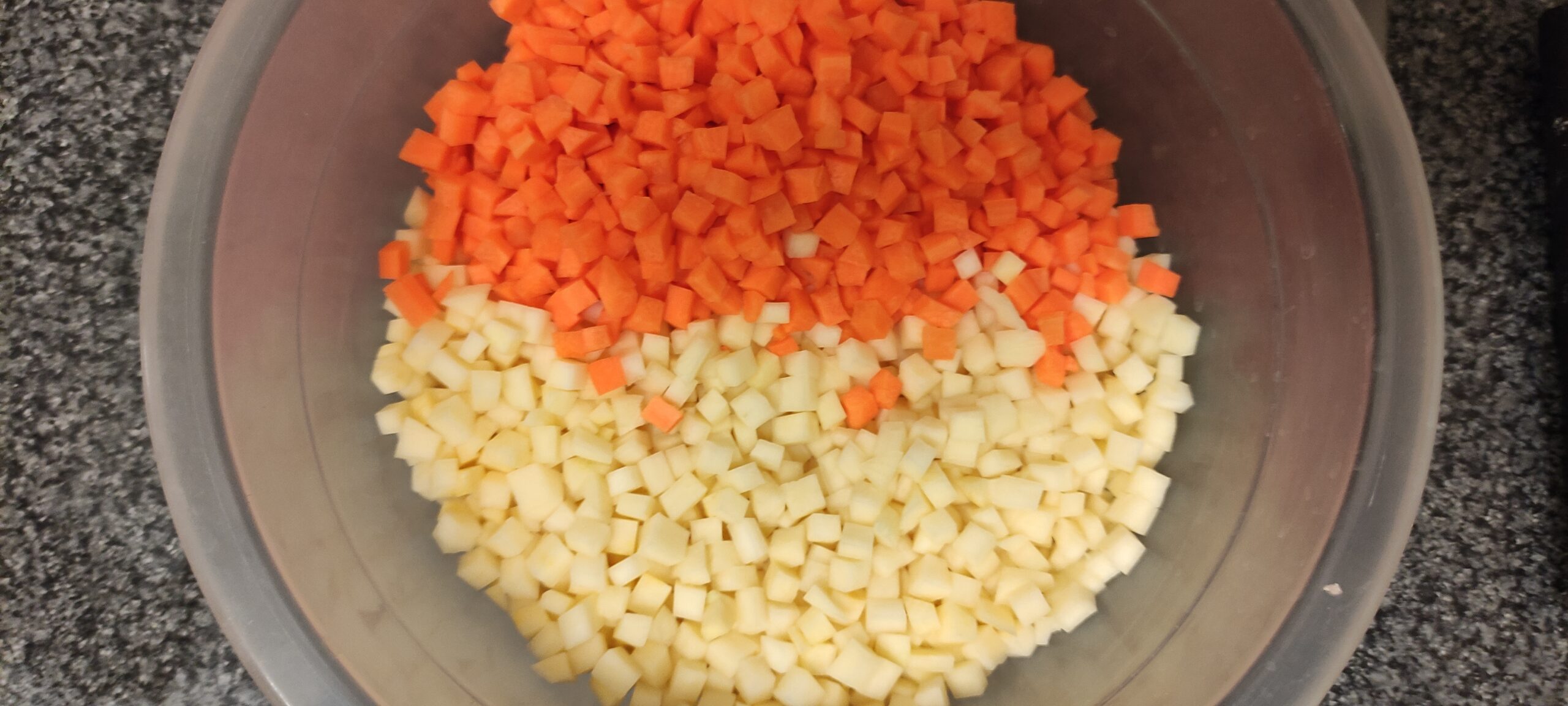
3.
I spent the whole night before cooking the pickle doing the chopping, taking long leisurely breaks in between sessions - though you could even do this this day before. Only the apples need to be chopped just before you're ready to cook, or else they'll turn brown.
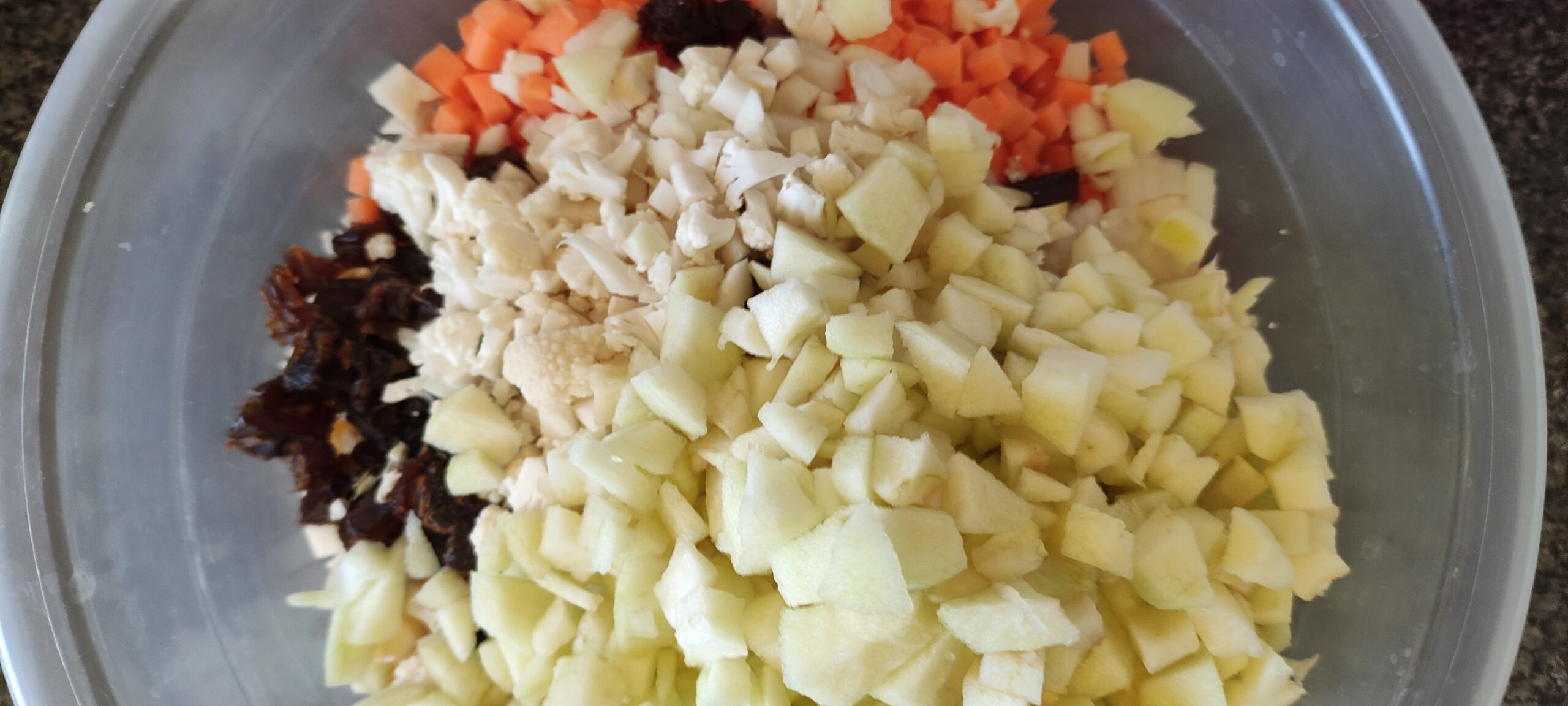
4.
Place the veg and the fruit in a large pan, sprinkle them with the spices, then pour in the vinegar. It won't be enough to cover them, but don't worry.
Bring the pan to a boil, pop on a lid and turn down the heat, and simmer for 45 minutes, stirring occasionally.
After 15 minutes, preheat your oven, then start sterilizing your jars and lids.
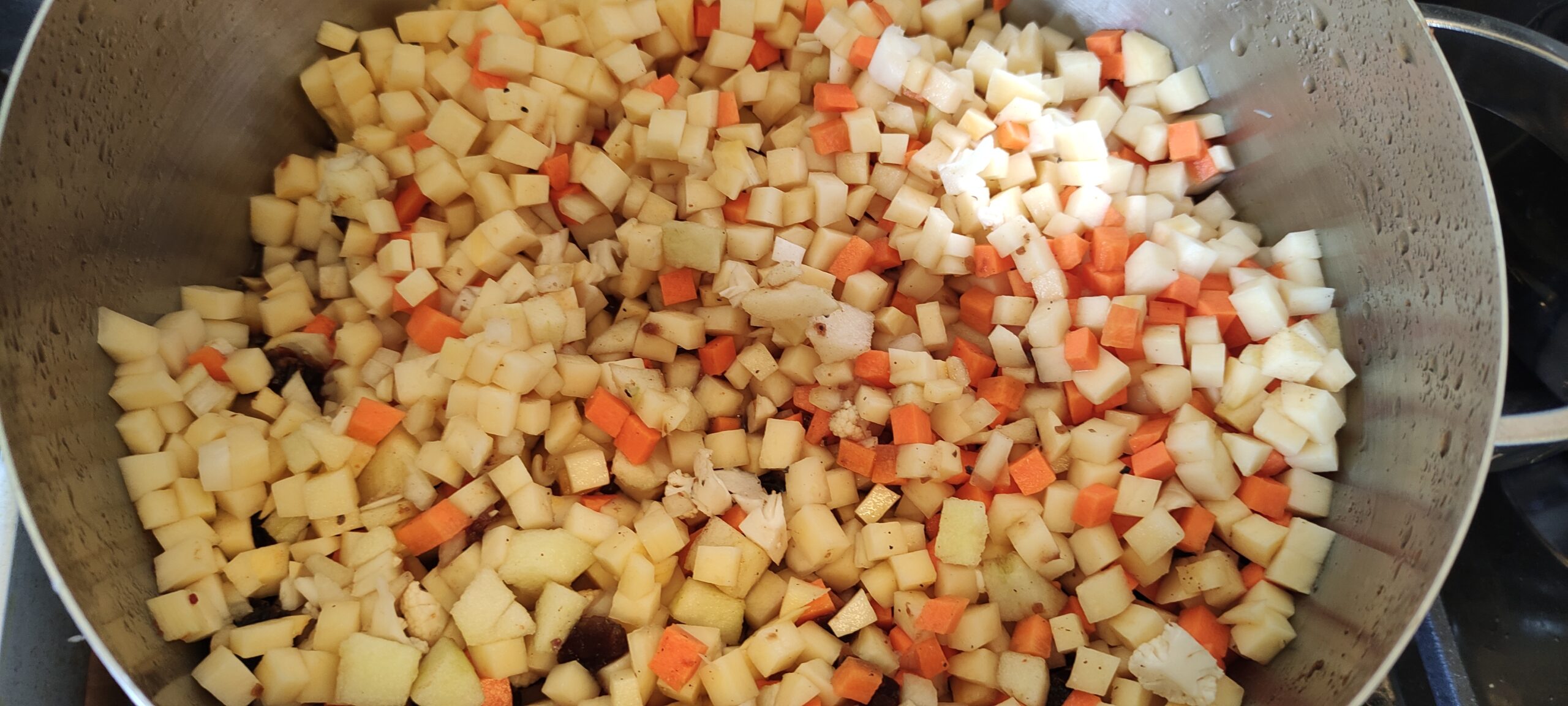
5.
Now stir in the tomato paste, add the white malt vinegar, water, and brown sugar, and bring it back to the boil.
Meanwhile, stir enough water into the cornflour to create a thin cream. Pour it into the boiling pickle, stirring all the while. Allow it to cook for 5 minutes, stirring while it thickens.
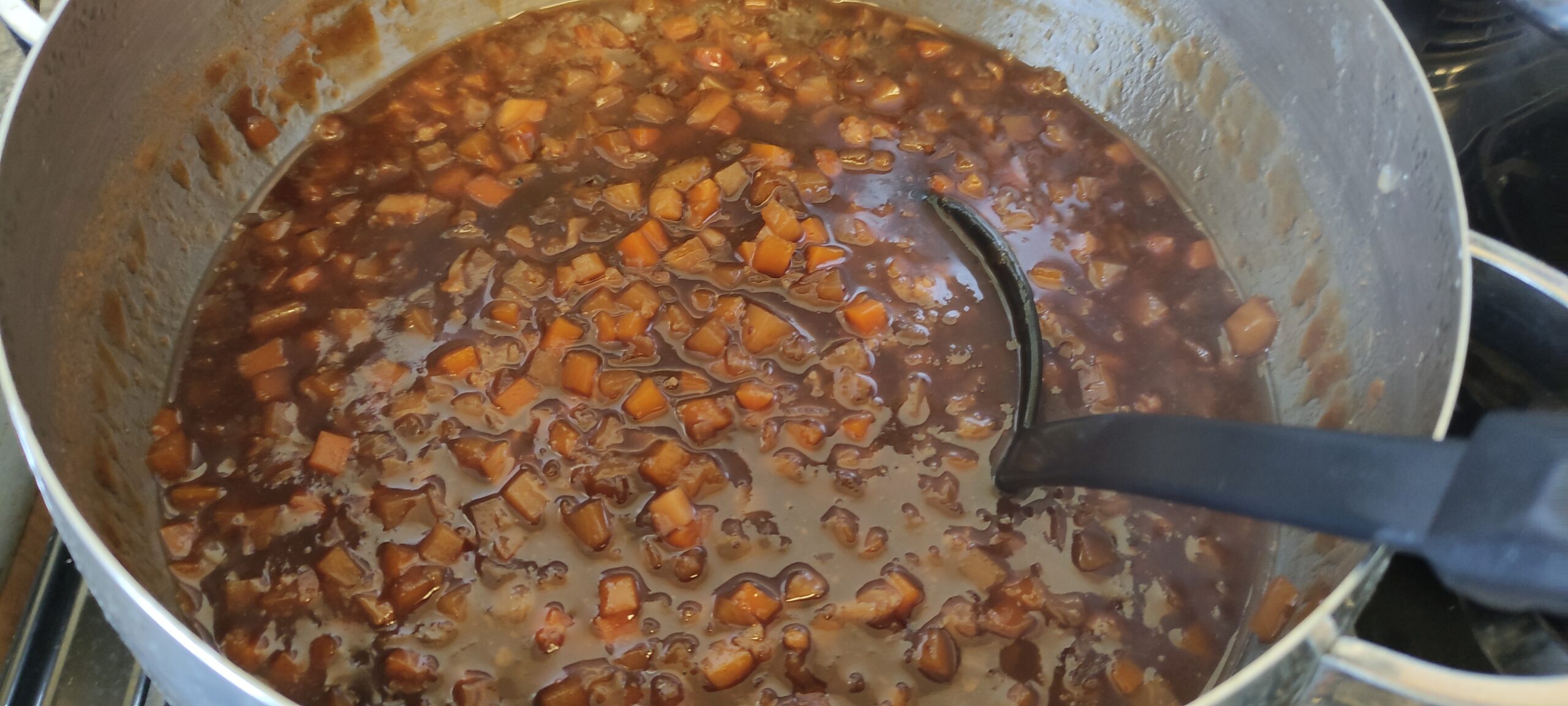
6.
Bottle the pickle while both the jars and the pickle are very hot. Screw on the lids, then wash away any excess on the outside of the jars by pouring boiling water over them. You can clean them more thoroughly once the seal forms and the pickle is cold. Find more comprehensive instructions here.
It's ready to eat immediately. Store in a cool, dry place.
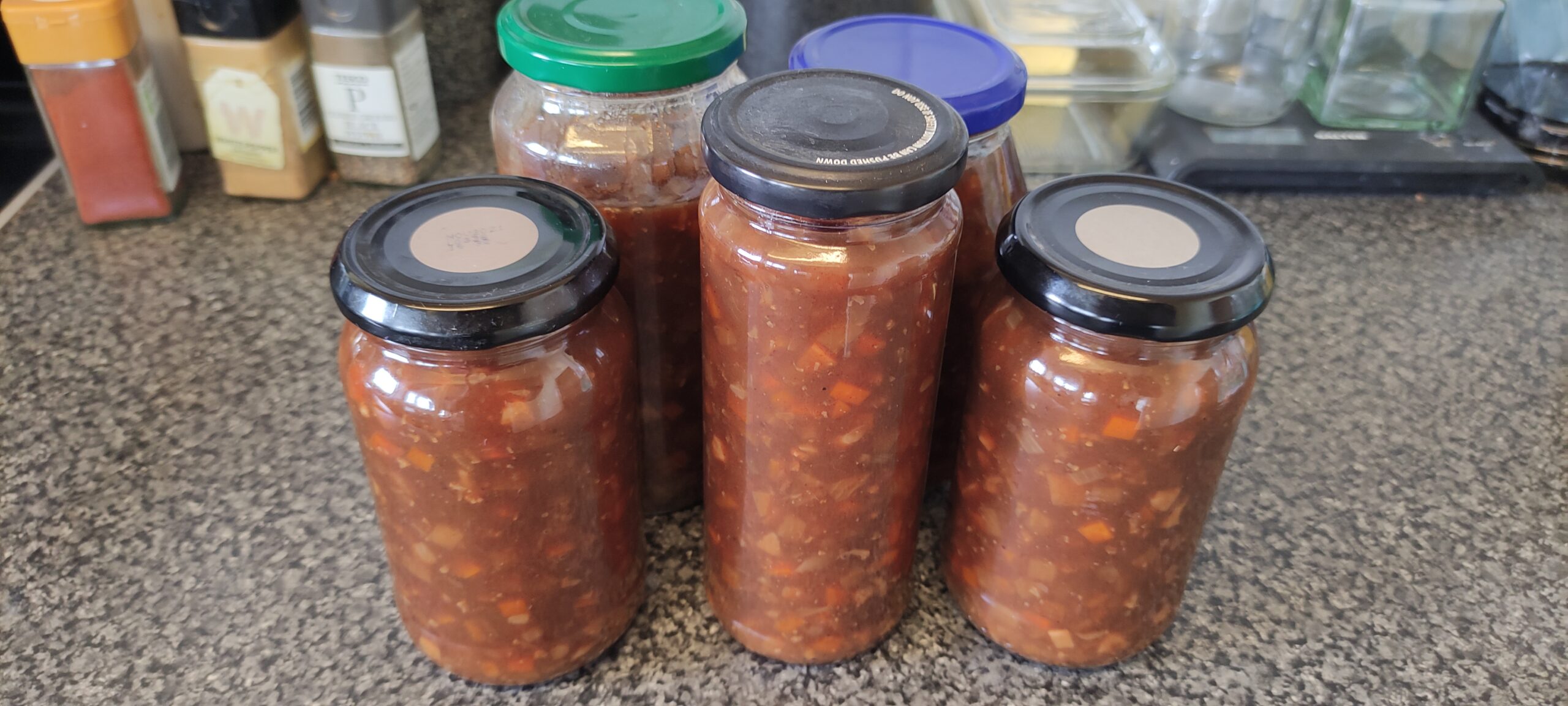
Any questions? You can use the comments form at the bottom of the page.
Did you know?
You'll find recipes at the back of all the books in the Send for Octavius Guy series: